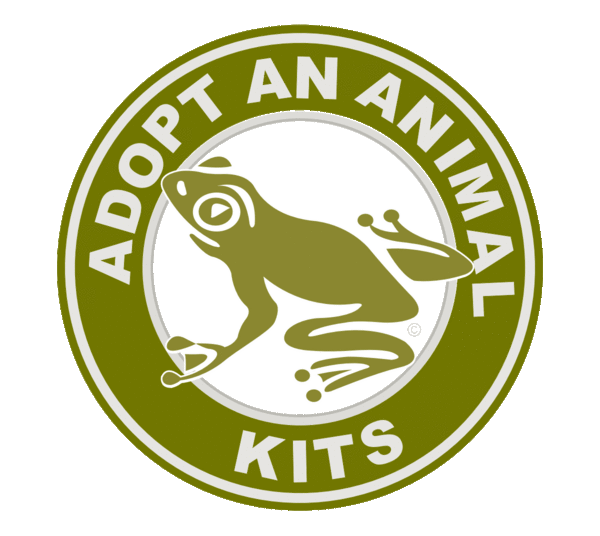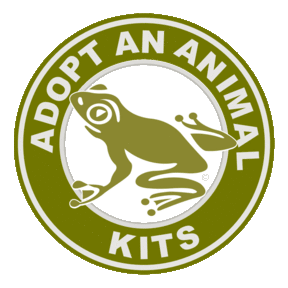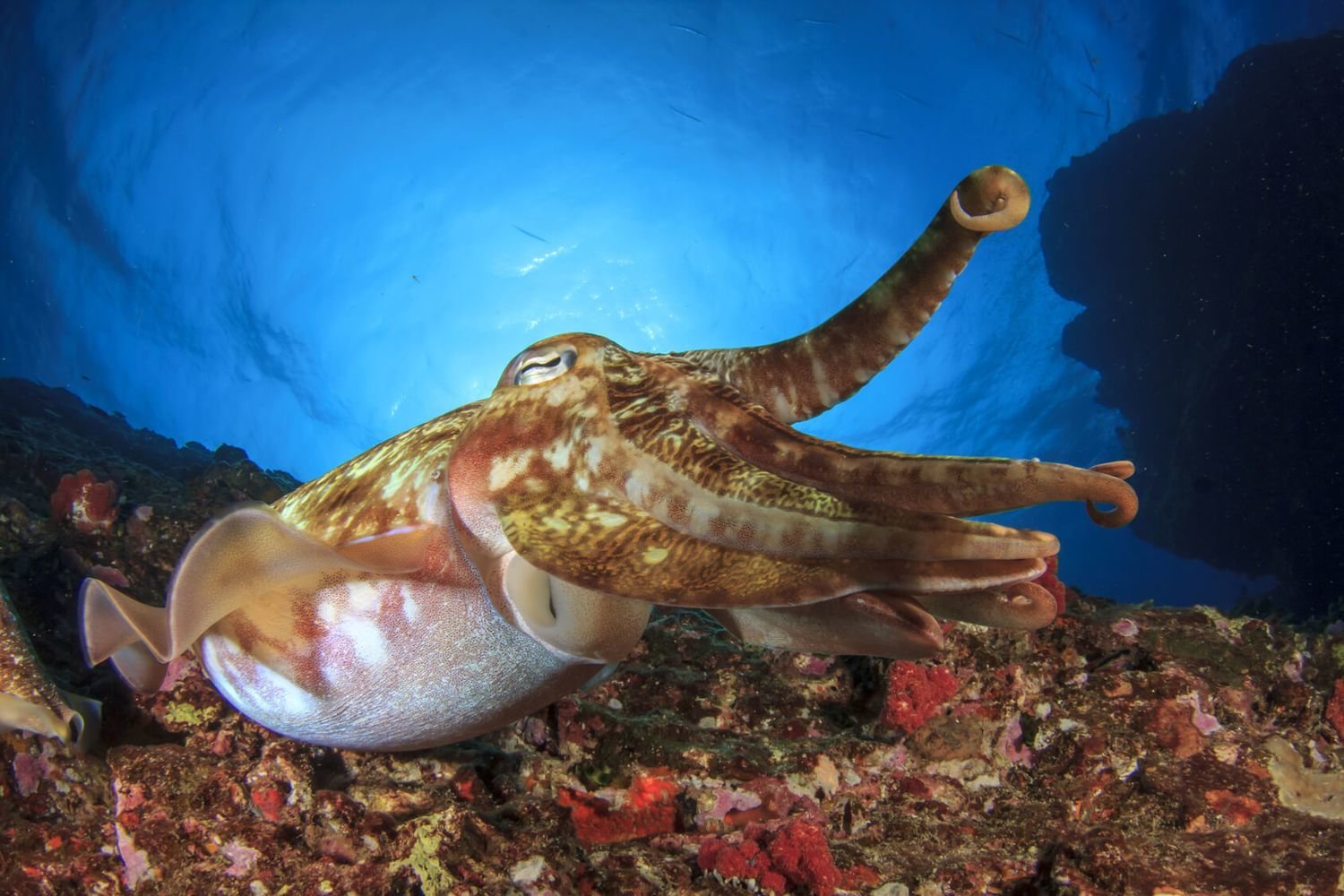

Adopt An Animal Kits
Adopt An Animal symbolically. Your Adopt An Animal Kit comes in a Deluxe Folder and includes: Glossy Photo of Your Adopted Animal; Adopt An Animal Adoption Certificate; Fact Sheet About Your Adopted Animal; Help Animals Info Cards Packed With Information On Animal Issues & How You Can Help Animals And The Environment. Adopt An Animal for Yourself or as a Gift.
Adopt A Squid
Adopt A Squid
Your Adopt A Squid Kit comes in a Deluxe Folder and includes:
- Glossy Photo Of Your Adopted Squid
- Adopt A Squid Adoption Certificate
- Fact Sheet About Your Adopted Squid
- Help Animals Info Cards Packed With Information On Animal Issues & How You Can Help Animals And The Environment
Adopt A Squid Kits make great gifts and can be sent directly to the recipient. Simply supply the recipient's name and mailing address as shipping information. We'll even include a letter stating the Adopt An Animal Kit is from you.
Adopt An Animal symbolic adoption is a one time fee. Adopt an animal for yourself or order an Adopt An Animal Kit as a gift. Help make a difference for animals - Adopt An Animal Today!
Adopt A Squid
Many-tentacled creatures that belong to the order Teuthida, squid are fascinating ocean dwellers, even achieving mythical status in our minds when we think of certain species like the giant squid. This order of molluscs, which is made up of approximately 300 recorded species so far, is similar to octopi and cuttlefish in that they have a distinct head, a symmetrical body structure, a mantle, eight arms, and phenomenal swimming abilities.
Squid are different from their ancestors and many other molluscs, however. In squid, the typical mollusc ‘foot’ structure has evolved. Squid usually have 8 paired smaller arms and two longer tentacles, and highly developed sensory organs. They also have a soft mantle enclosing their organ structure instead of a shell, although they do have a vestigial horny plate (called a gladius) still present that supports the mantle and acts as a site for muscle attachment.
Squid live across an enormous variety of aquatic habitats; an important food source for many other aquatic creatures. They can be found in both freshwater and saltwater environments, deep water and shallow water, and in many different temperature ranges. Most squid species tend to be no larger than about 24 inches long, but the giant squid may be as long as 43 feet in length. That’s almost the size of a school bus.
The squid’s appearance itself is certainly unique. Their skin is covered in chromatophores, which are special cells that allow the squid to change color in order to blend in with its surroundings, much like an octopus does. The mantle cavity contains the squid’s gills, organ systems, and siphon apparatus.
Although squid do have swimming fins, most squid species actually propel themselves mainly by jet propulsion by sucking water into the mantle cavity and pushing it forcefully out through the siphon.
Because they’re the ideal food for a number of predators ranging from sharks, fish, birds and whales, squid have evolved to be quick escape artists. If a squid is threatened, they can quickly expel ink from a small sac near their rectum, temporarily confusing their potential predator and providing cover for a quick escape. Some squid species will even propel themselves right out of the water to escape predators like schools of tuna, gliding through the air for short periods of time.
When they’re not being chased as a potential food source, squid are fairly effective hunters themselves, with fairly complex digestive systems. More intelligent than many of us would expect, some squid even hunt together cooperatively. A squid can propel itself with speedy precision towards its prey, first using a sharp, horny beak to kill prey and tear it into pieces, then pushing food from its muscular stomach into an organ called the caecum for digestion. Food then passes to the liver for nutrients to be absorbed before the squid expels the remaining waste.
Another anatomical feature characteristic to squid is the fact that they have three hearts; two to feed the gills, and a larger, systemic heart to pump blood around the squid’s body. Squid also have the largest eyes in the animal kingdom, relatively speaking. Positioned on either side of their head, a squid’s eyes focus by changing the position of the hard lens inside the eye, much how the lens of a camera moves back and forth.
Reproduction in squid takes place though the fertilization of the female’s eggs by the male. A male squid will often display unique color patterns to attract a female’s attention. Then he mates with her by inserting a copulatory pad (found on the modified end of one of his tentacles) into the female’s mantle and depositing spermatophores (sperm cells) that fertilize the eggs. The female will then place hundreds of eggs into a capsule, anchoring the capsule to sandy ocean bottoms. The time between laying and hatching of the eggs can be vary, since eggs laid in warmer water temperatures tend to hatch more quickly. Some squid egg beds can even cover acres of sand bed.
After the squid larvae hatch, they begin to feed on copepods and other plankton until they’re mature enough to hunt, though many are eaten by predators. Neither squid parent tends to the eggs or young, and it’s been noted that many adult squid species die shortly after reproducing, as an adult squid’s digestive organs diminish as they mature, making more room for reproductive organs. Most species haven’t been found to live longer than one or two years.
THREATS TO SQUID
The fact that squid reproduce rapidly and in large numbers is to their advantage. Squid can quickly replenish their population numbers, which is important to other species that rely on them as a food source.
Although there are no significantly endangered squid species at this point, the largest threat to squid populations worldwide is commercial overfishing by humans. Not only are they often used as bait to catch larger fish, but calamari (fried squid) is a popular dish in many places.
Water pollution, overharvesting and interference with egg capsules can also pose a potential threat to these animals as well.
Adopt Adopt An Animal Kits
Our Adopt An Animal Kits are educational packets that allow you to symbolically adopt a favorite animal species and contain a variety of information promoting the protection of wildlife, companion animals, farm animals and the environment. By purchasing a symbolic adoption kit you will receive a packet of information regarding daily choices you can make to help the earth and animals.
Your Adopt An Animal Kit comes in a Deluxe Folder and includes:
Glossy Photo Of Your Adopted AnimalAdopt An Animal Adoption CertificateFact Sheet About Your Adopted AnimalHelp Animals Info Cards Packed With Information On Animal Issues & How You Can Help Animals And The Environment.
Adopt an animal for yourself or order an Adopt An Animal Kit as a gift. Symbolically adopting an animal is the perfect gift for a loved one who loves animals, and helps to promote the compassionate treatment of animals and respect for the environment by offering information on how to help the earth and animals. Adopt An Animal Kits can be sent directly to the recipient: simply supply the recipient's name and mailing address as shipping information. We'll even include a letter stating the Adopt An Animal Kit is from you.
Adopt An Animal Kits is a small, independent business not affiliated with any other business, non profit or charitable organization.
Fast Shipping!
Shipping time for Adopt An Animal Kits averages 2 to 4 business days - USA. Allow additional time for Adopt An Animal Kits orders outside the USA. Your Adopt An Animal Packet will arrive approximately 2 to 4 business days following shipping date. Shipping for Adopt An Animal Kits within the USA is by U.S.P.S. Priority Mail.
INTERNATIONAL ORDERS: Average shipping time for Adopt An Animal Kits outside of the USA is 5 to 14 business days, including Canada. International Shipping & Handling for Adopt An Animal Kits is by U.S.P.S. First Class Mail.
About Us

Adopt An Animal Kits, LLC
The world is teaming with an amazing diversity of animals. Some species are beautiful, others bizarre — but they all are important to the ecosystem and deserve our respect, compassion and protection. Unfortunately, many animal species are declining at a rapid rate as a result of irresponsible human activities. Habitat destruction, pollution, hunting, poor agricultural practices and changes in climate are among the threats faced by wildlife and domestic animals.
Adopt An Animal Kits, LLC is a small business who believes in promoting the advancement of compassionate living by educating the public about animal and environmental issues and what individuals can do to prevent cruelty to animals. Through our work, we strive to eliminate the prejudice of animals (speciesism) through educational efforts. Our business produces printed and printable educational materials available to individuals with an interest in earth and animal topics. Our Adopt An Animal Kits seek to educate and influence individuals on environmental and animal issues. The purchase of an Adopt An Animal Kit allows you to symbolically adopt your, or your loved one's, favorite animal species while promoting the protection of wildlife, companion animals, farm animals and the environment. Rather than adopting an indivdual animal, you are symbolicly adopting the species. Each kit contains a collection of information on how you or your loved one can make daily choices to help animals and the environment.
Our website provides an information portal regarding these issues. Information posted on the site is free of charge and available to anyone with an interest. Our printed and printable materials are available to individuals with an interest in earth and animal issues. We produce hundreds of fact sheets, flyers, and digital materials regarding environmental and animal issues. Most materials are available at no cost to anyone with an interest.
Adopt An Animal Kits, LLC is not a charitable or nonprofit organization.

